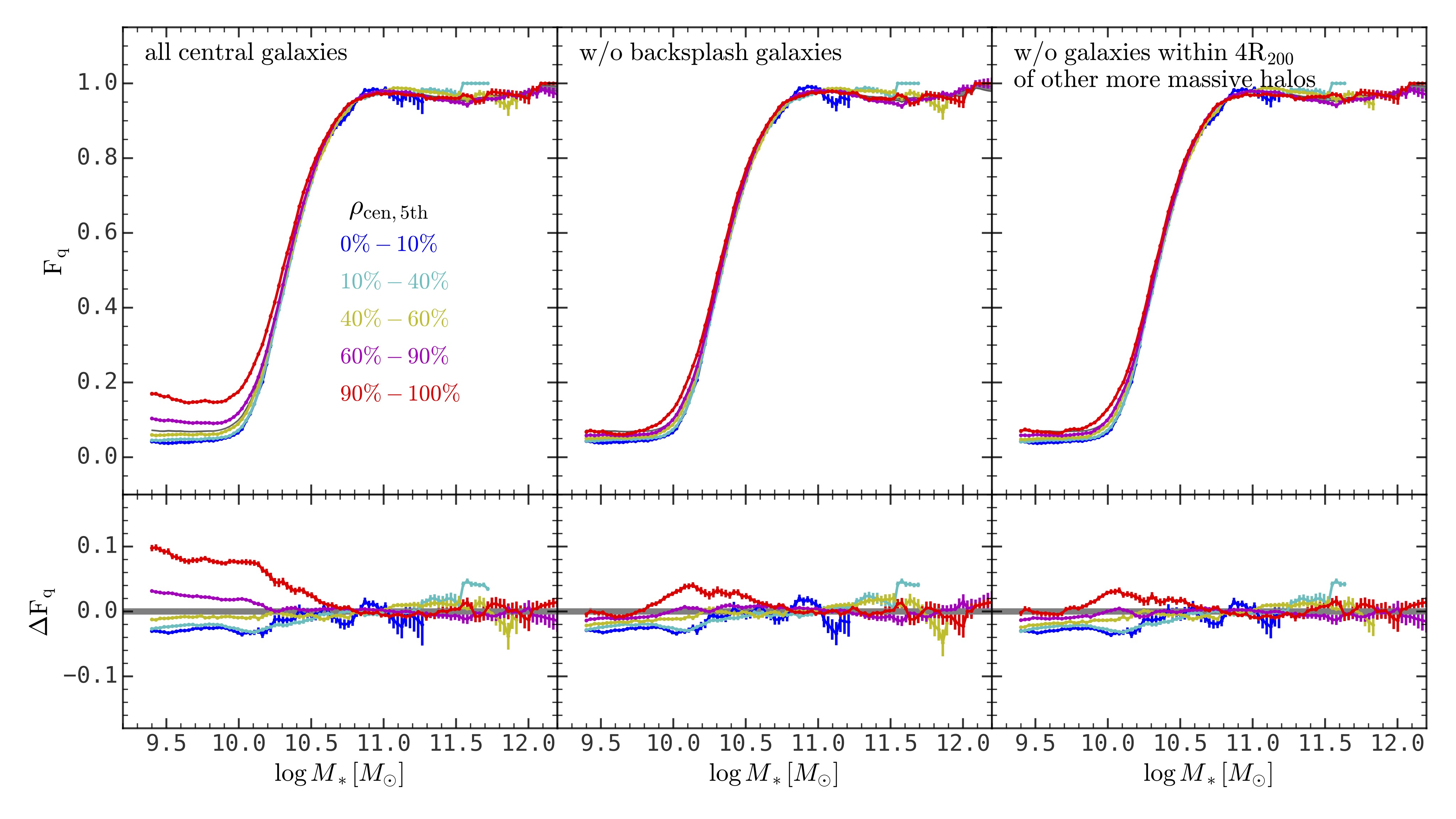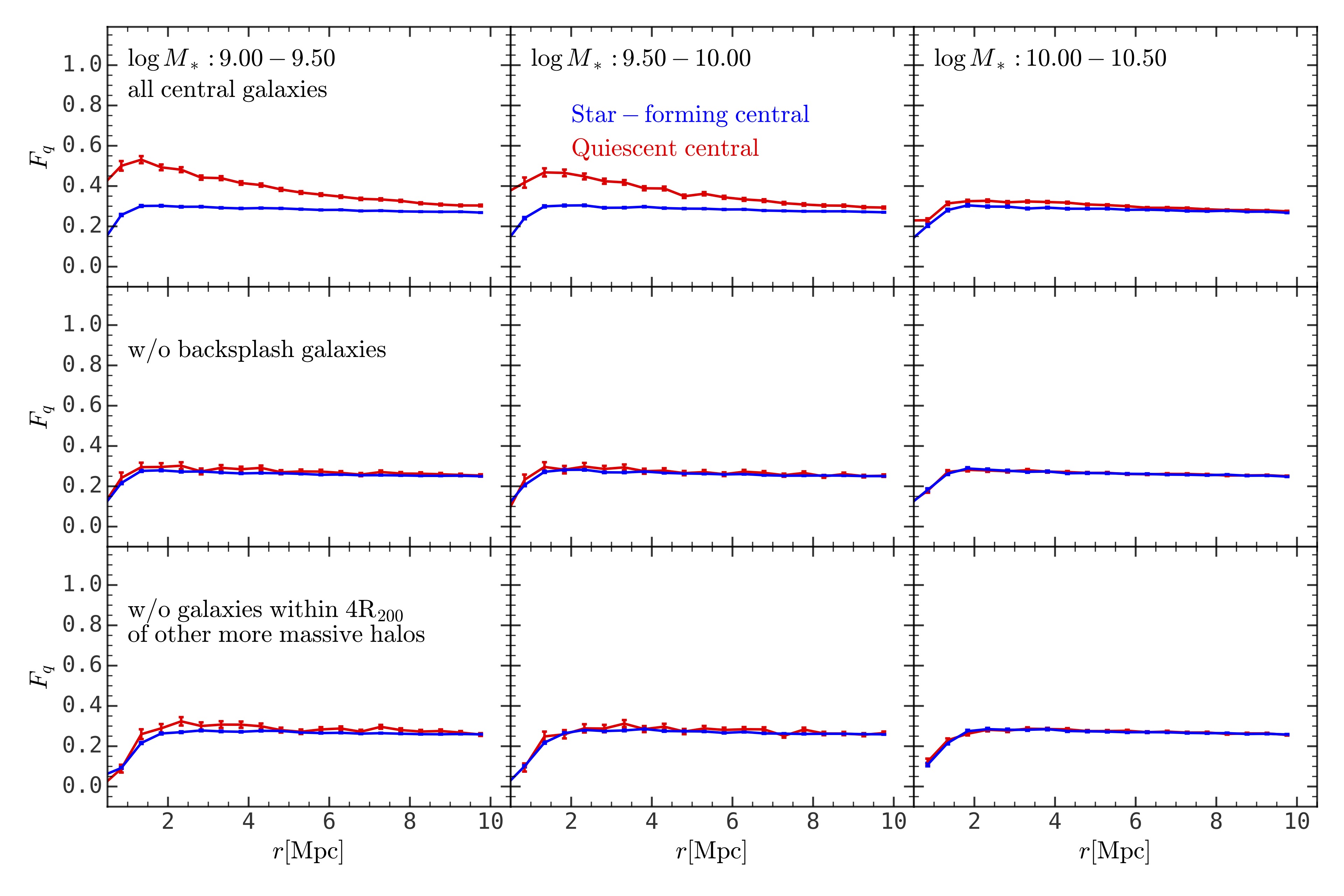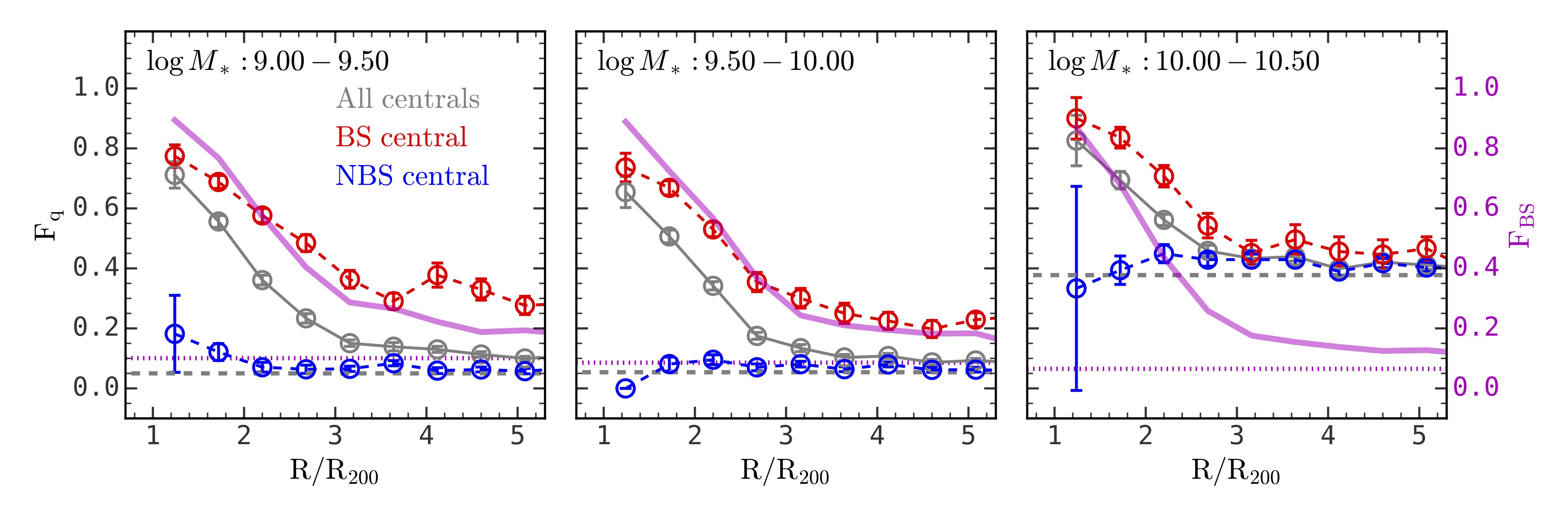Dissect the two-halo galactic conformity effect for central galaxies
Feb. 09, 2023
Observations suggest that the star formation states of central galaxies depends on not only their internal properties, but also the external environment, where central galaxies around another quiescent central galaxy is more probable to be quiescent; this correlation extends to $\sim 4$ Mpc. This phenomenon poses a challenge to the conventional galaxy formation models, in which the properties of galaxies are determined by their local environment.
This blog is based on arXiv:2304.06886.
Two-halo galactic conformity
Kauffmann et al. 2013 first found the two-halo galactic conformity effect, where galaxies around quiescent central galaxies have a higher fraction of quiescence than galaxies around star-forming central galaxies, and this correlation extends to several Mpcs. Subsequent studies found that this effect is caused by the correlation between the quiescent fraction of central galaxies and the large-scale environment (Sun et al. 2018). Similar effects are also found in semi-analytical models and hydrodynamical simulations of galaxy formation, from which they find that the central galaxies around massive clusters are the major contributor to this effect (Lacerna et al. 2022).
Physical explanations
There have been two major explanations proposed for the two-halo galactic conformity effect. Kauffmann 2015 proposed that the powerful AGN feedback not only quenches the host galaxy, but also affects the star formation activities of neighbour galaxies up to several Mpcs. Ayromlou et al. 2023 proposed that central galaxies start to quench their star formation activities prior to falling into the host halo and becoming satellite galaxies.
Backsplash galaxy
Here we analysed the two-halo galactic conformity effect in the IllustrisTNG simulation, from which we see strikingly similar signals to the observational results. A further investigation reveals that the backsplash galaxies are responsible for this signal, since the removal of these backsplash galaxies can effectively eliminate the two-halo galactic conformity signal, as one can see from Figs. 1 and 2.


The backsplash galaxy is a central galaxy at the time of observation, but was a satellite galaxy of another massive halo previously. It is noteworthy that the emergence of backsplash galaxies depends on the definition of halo boundary. If one adopts the backsplash radius as the halo boundary, most of the backsplash galaxies defined here will be classified as satellite galaxies, and others will be classified as fly-bys.
During the satellite phase, a backsplash galaxies will go through a pericenter, at which the ram pressure is strong enough the strip a considerable fraction of its cold gas out. Consequently, this galaxy is more likely to be quenched even after it gets away from that massive halo.

The excess quenching of backsplash galaxies compared with other central galaxies can cause the two-halo galactic conformity effect. To begin with, the backsplash galaxies are clustered around massive halos up to several Mpcs. And these backsplash galaxies are more quenched than other non-backsplash galaxies (see Fig. 3). Finally, when we select quiescent central galaxies to measure the two-halo galactic conformity signal, those backsplash galaxies around massive halos are more probable to be selected due to their excessive quiescent fraction. Their neighbours (to several Mpcs) are more probable to be backsplash galaxies and, therefore, more probable to be quiescent.
Summary
We studied the two-halo galactic conformity in the IllustrisTNG simulation, whose signal is very similar to what we seen in observation. And we find that the backsplash galaxies are responsible for this signal, instead of any powerful AGN feedback, nor super-halo-scale environmental effects.